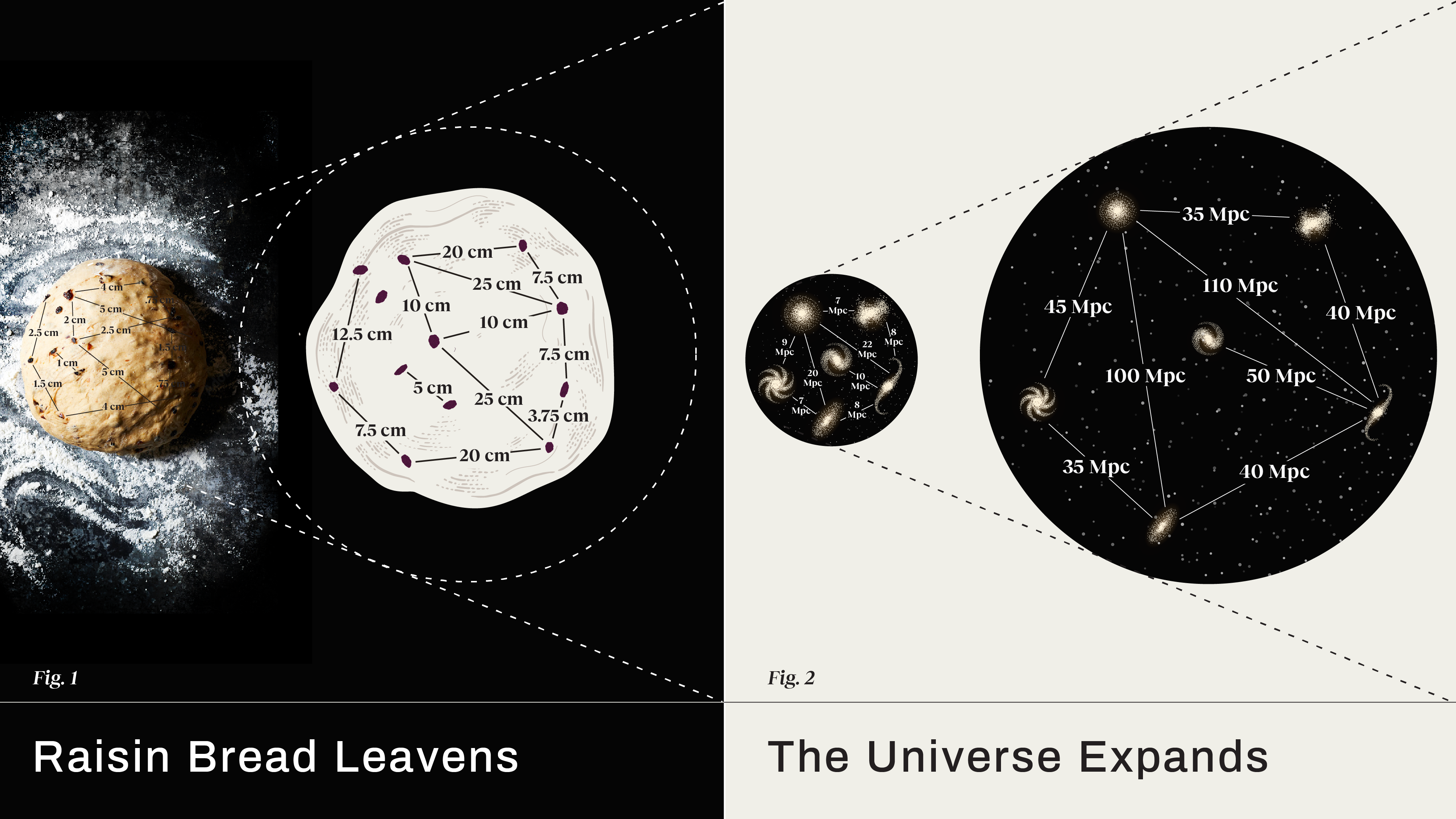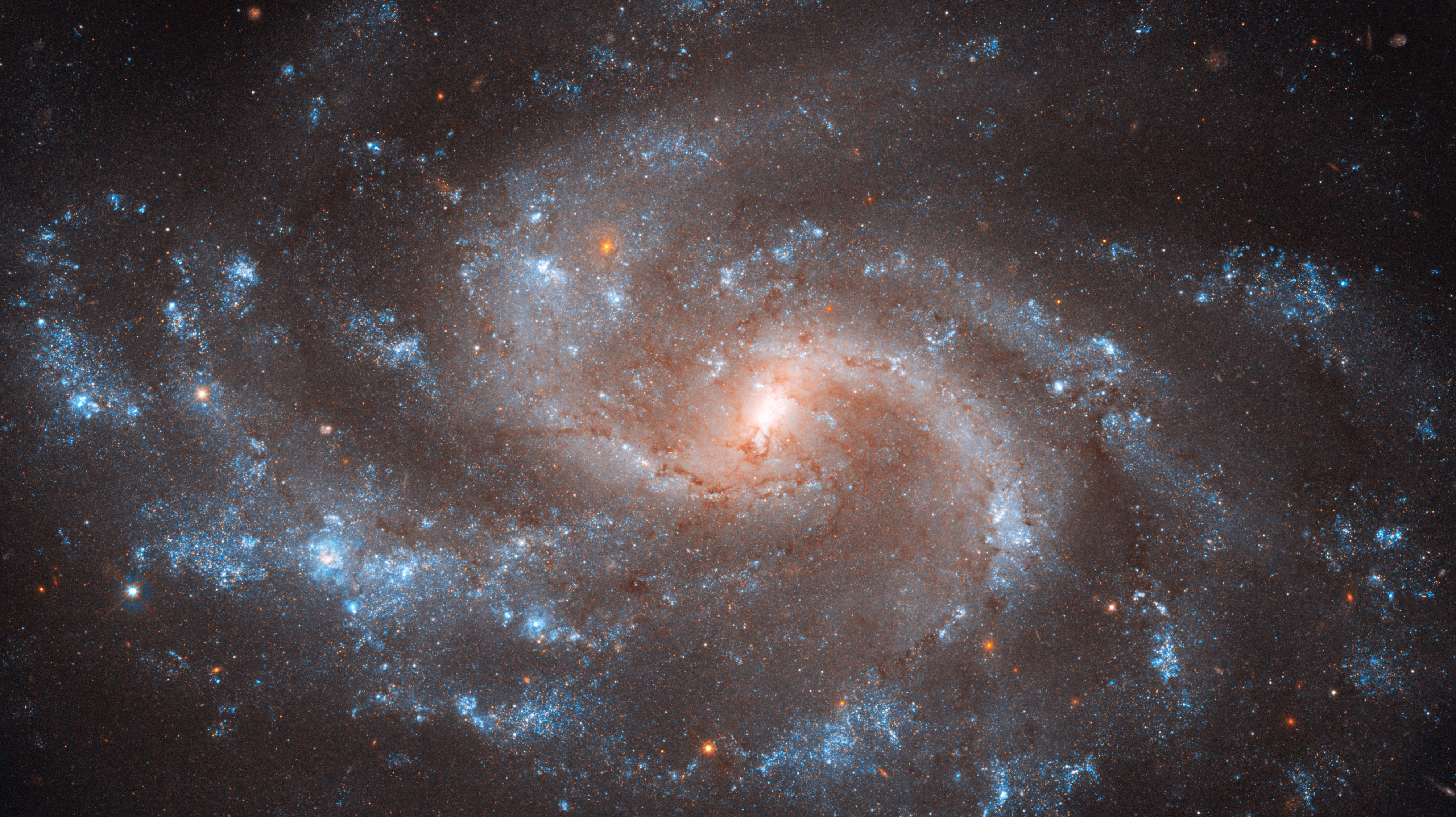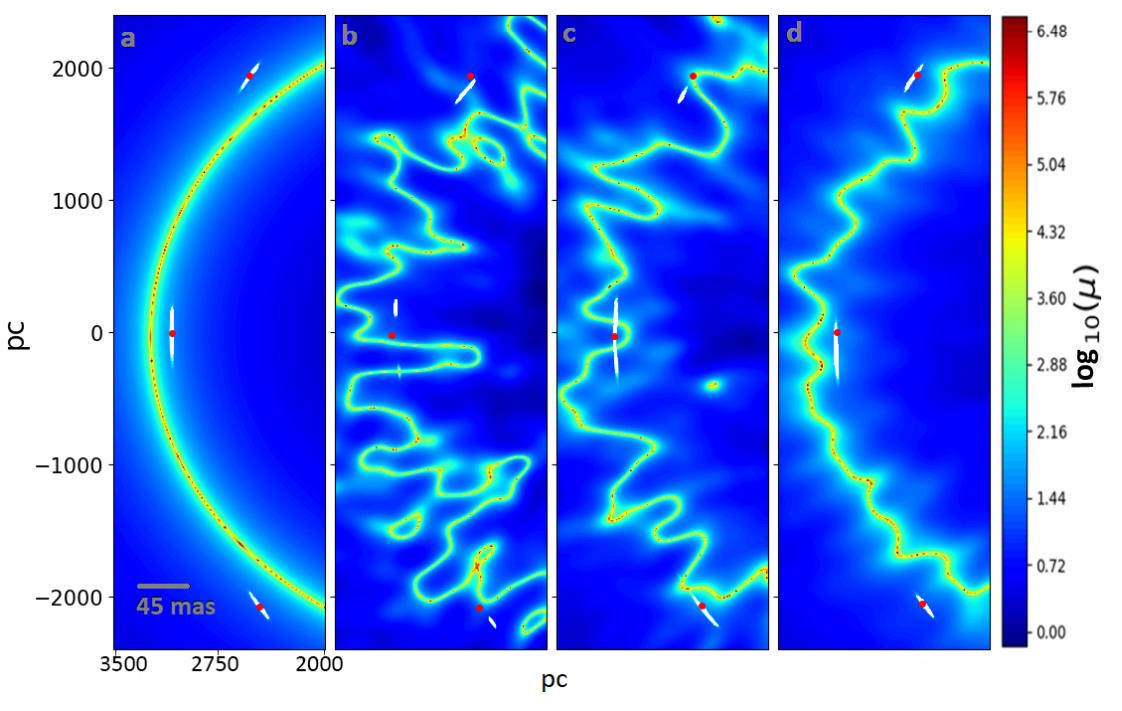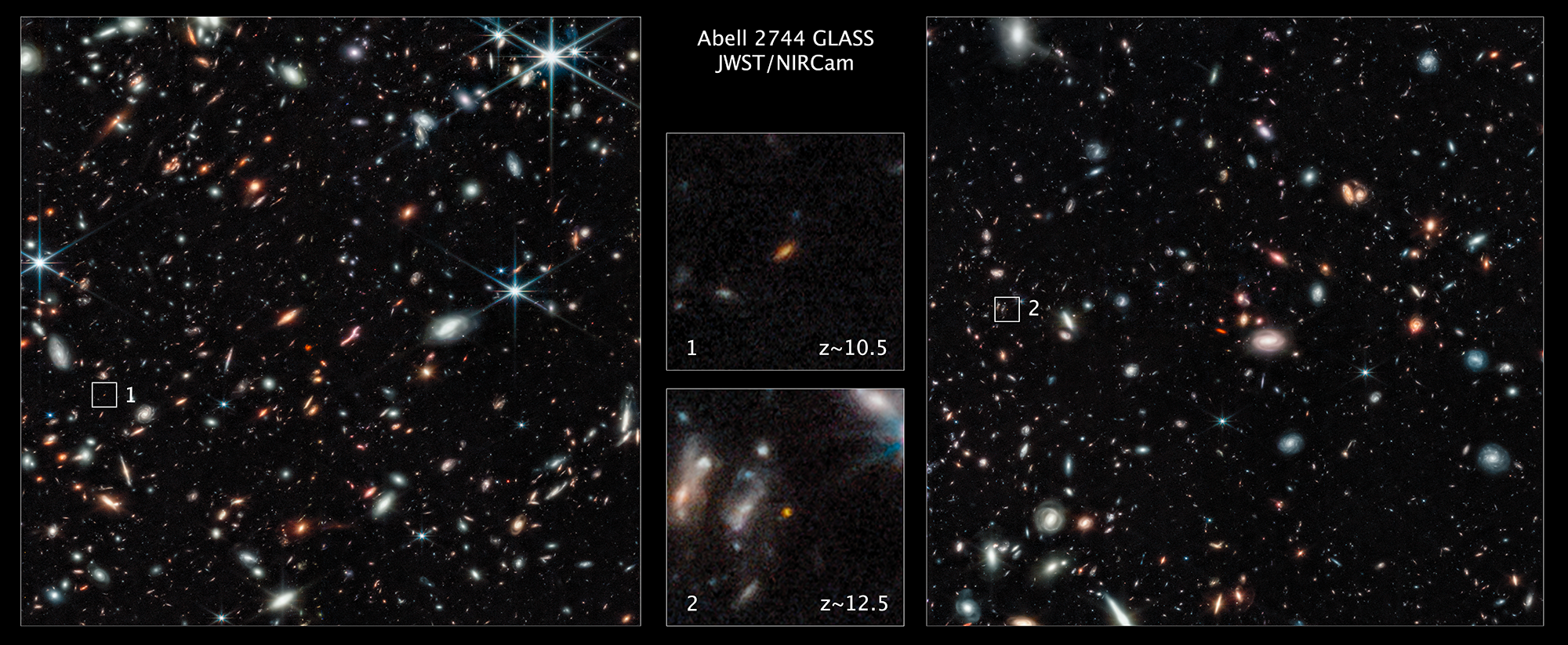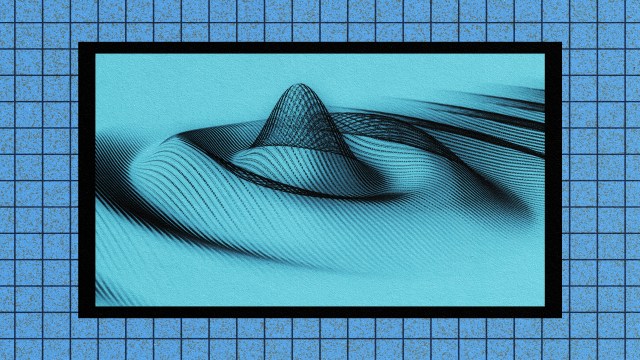JWST’s first triple-image supernova could save the Universe
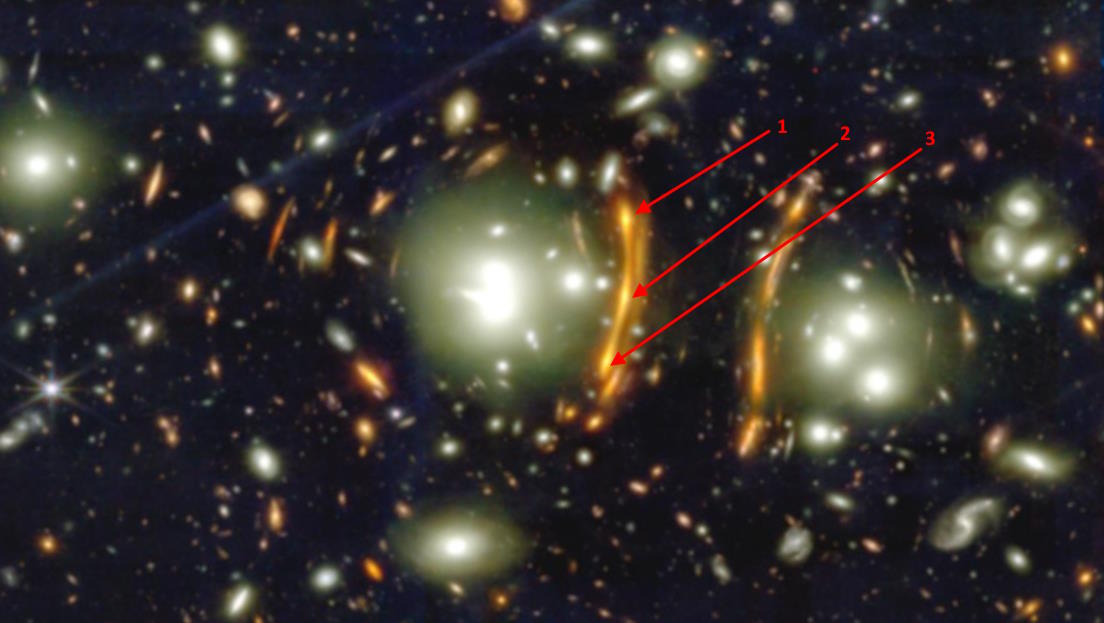
- Large clusters of galaxies aren’t only interesting because of the stars, gas, dust, and dark matter inside, but also because of how their gravity magnifies the distant Universe.
- A remarkable find with JWST revealed a gravitationally lensed type Ia supernova, the second most-distant ever discovered, that was caught exploding in three independent images.
- The extraordinary gravity of this galaxy cluster is aligned with many rich, star-forming background galaxies, and might be the key to resolving astronomy’s greatest modern puzzle: the Hubble tension.
One of the biggest problems facing modern astronomers, astrophysicists, and cosmologists — every scientist who studies the Universe itself for a living — is that we do not understand how quickly the Universe is expanding. The most direct method of measuring the expansion rate, by looking at more and more distant objects and tracking how quickly they appear to recede from us, consistently gives answers that are about 9% higher than the values we get from looking at signals imprinted in the very early Universe. This has led many to question whether there’s a crisis in cosmology, and if we need to overhaul our entire way of looking at the Universe.
One potential solution could lie in directly measuring larger numbers of objects whose intrinsic properties are known — so-called “standard candles” like type Ia supernovae — at ever-greater distances. A huge challenge to this has been that supernovae are rare, infrequent, and very difficult to observe at extreme distances. Even with its unprecedentedly powerful eyes, JWST, with its narrow field-of-view, will only observe these events rarely.
However, a new proof-of-concept has just arrived. In a new paper just submitted on September 13, 2023, Dr. Brenda Frye and collaborators spotted a type Ia supernova that appeared in triple: magnified and distorted by the gravity of a foreground galaxy cluster. It just might be the key to measuring, to greater precision and accuracy than ever before, exactly how the Universe truly is expanding.
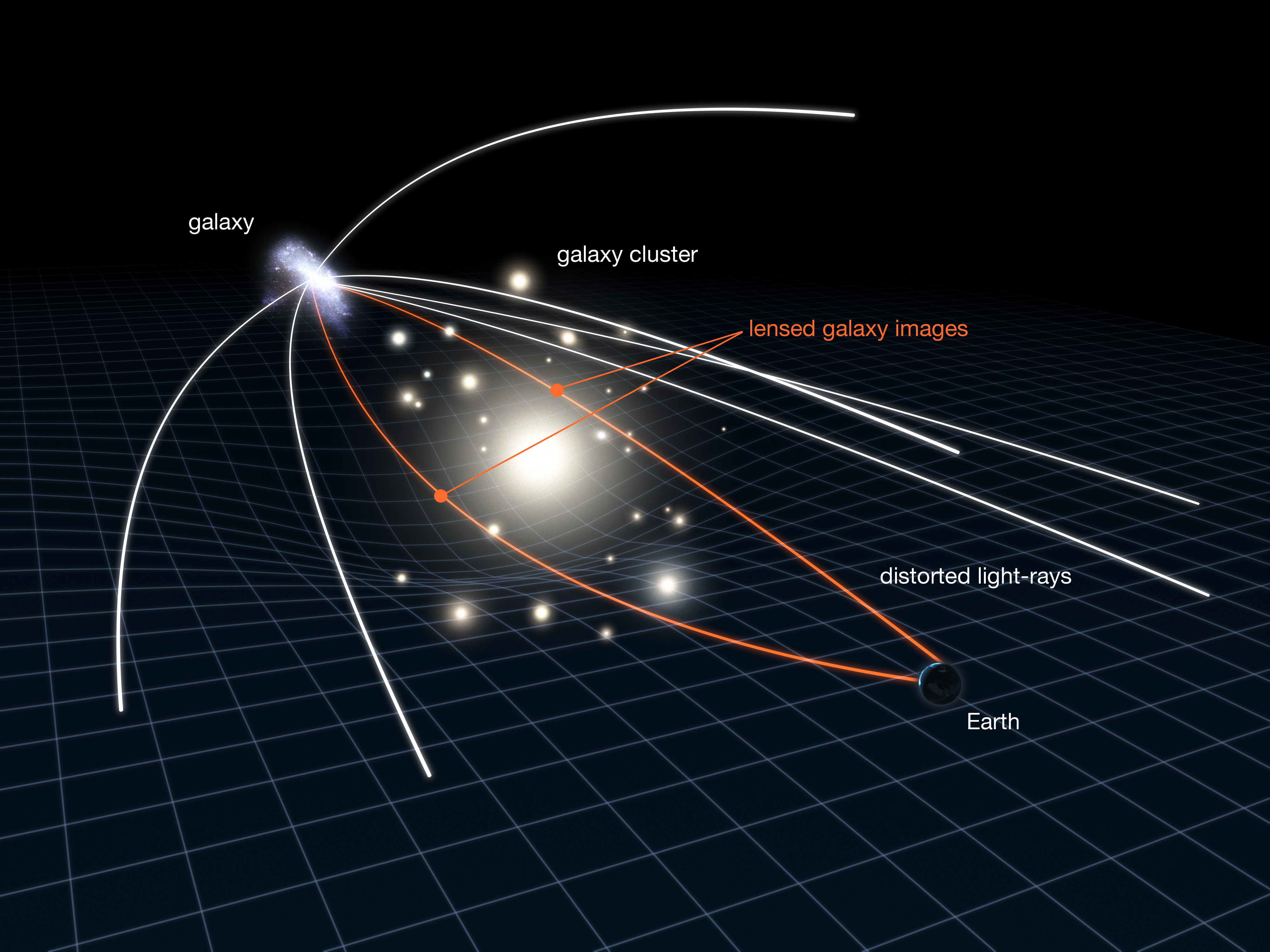
Type Ia supernovae are one of the most important classes of astronomical objects in the entire Universe. They have a rare combination of traits that make them incredibly useful.
- They’re very bright objects, meaning that we can not only observe them in nearby galaxies, but in galaxies billions or even 10+ billion light-years away.
- They’re incredibly standard, meaning that if you measure how they brighten, reach their peak brightness, and then fade over time, you can infer how intrinsically bright and luminous they were.
- They’re slowly evolving transient events, meaning that even if you measure them at just a few time intervals, even if those measurements are separated by weeks, you can reconstruct their intrinsic properties.
- And they stick out like a sore thumb; there are practically no “impostor” events that risk being confused with type Ia supernovae.
If you can measure a type Ia supernova’s light over time (what we call its “light curve”), you can learn how far away from you it is. If you then tie that supernova to the host galaxy where it occurred, and then measure the redshift of that host galaxy, you can use them to measure the expansion rate directly. They’re truly remarkable objects.
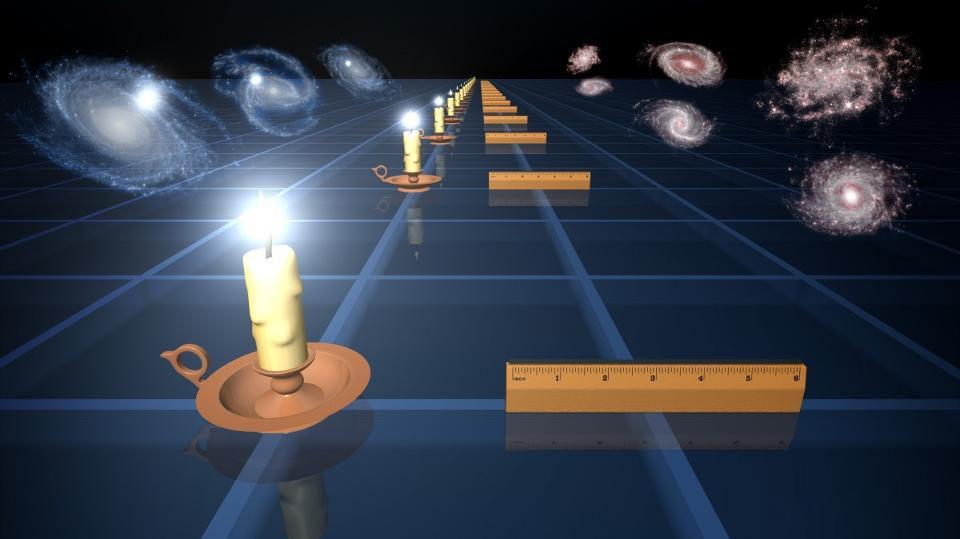
However, there’s something that’s even more exciting: sometimes, you’ll have a galaxy whose light is distorted into multiple images by the presence of a foreground mass, also known as a gravitational lens. The more massive the foreground object is, the greater the strength of the gravitational lens, and the greater the background volume of space that will be potentially magnified by this lensing effect. And if you’re very lucky, that lensed galaxy will be massive, forming lots of new stars, and will be a hotbed for the cataclysmic explosions that accompany a star at the end of its life cycle: the various types of supernovae.
Back in the early 2000s, many astronomers recognized that if you could successfully map out the mass profile of a gravitational lens — i.e., if you could understand how the foreground mass was distributed to cause the multiply lensed images of the background object — you could use the measurements of the gravitational time delay of any transient events that occurred within them to measure how quickly the Universe is expanding. Because type Ia supernovae are such good standard candles, they possess a unique power: you can measure the magnification power of the gravitational lens directly, and then use that to measure the expansion rate to alarmingly good accuracy.

That piece of information, alone, is enough to give us a big dream to strive for in astronomy. If we can:
- find a strong, massive, foreground gravitational lens,
- that magnifies a region (or multiple regions) containing lots of galaxies or even a galaxy group/cluster,
- where the background, lensed galaxies exhibit multiple images,
- are very distant and at a high redshift,
- and also are massive and star-forming,
then we should be able to observe it periodically, over long periods of time, and may detect one or even large numbers of supernovae, including type Ia supernovae that we can use as “standard candles,” to measure how the Universe is expanding with greater precision and accuracy than ever before.
All of that, combined, is why this new paper is so remarkable. While performing NIRCam imaging of a massive galaxy cluster, one where gravitational lensing effects like extended arcs, multiple images, and distorted galaxy shapes are clearly visible, astronomers caught evidence for a type Ia supernova occurring in one of the background objects. The supernova appeared in three independent places in the image and just happens to be the second-most distant type Ia supernova ever observed, behind only 2013’s SN Wilson.
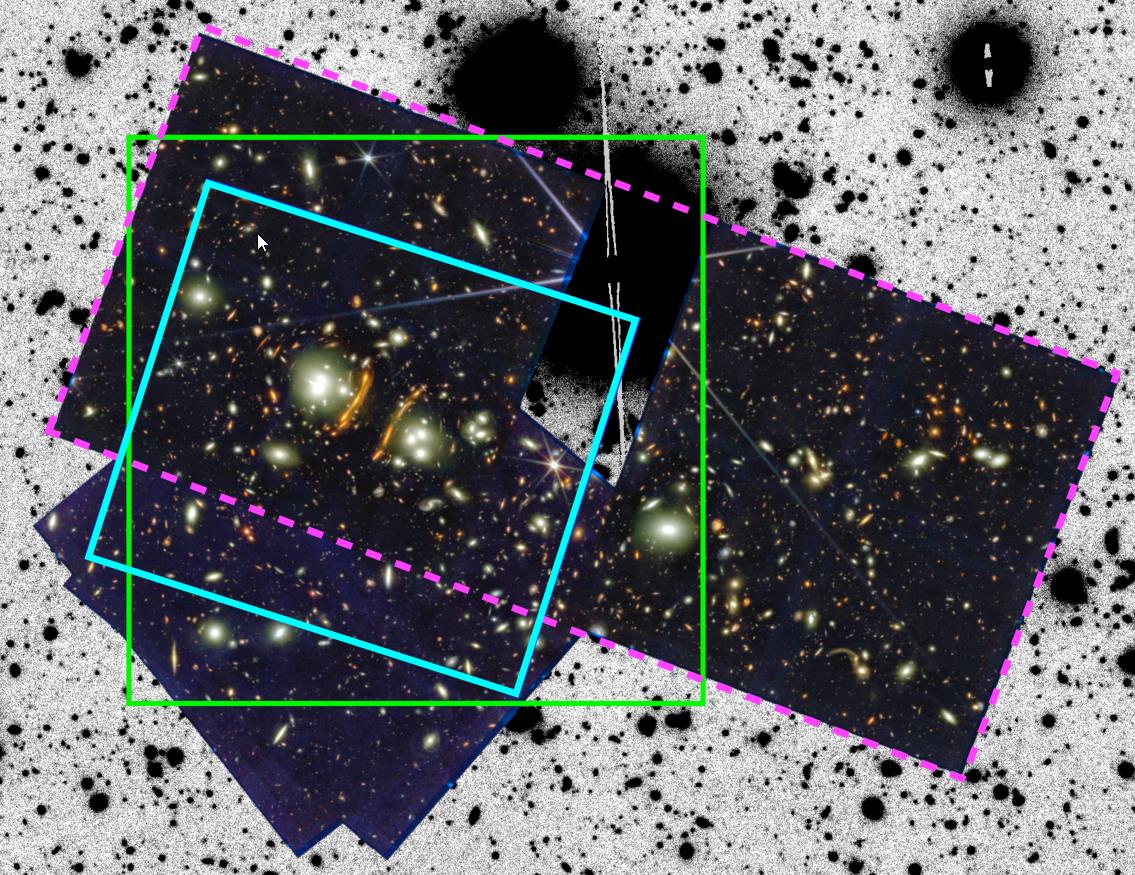
First off, the foreground galaxy cluster, i.e., the one doing the gravitational lensing, is a pretty big one! Known as galaxy cluster PLCK G165.7+67.0 (or G165 for short), it has a total cluster mass of about 260 trillion (2.6 × 1014) solar masses, or a few hundred times the mass of the Milky Way. This foreground cluster, G165, is already an impressive 4.5 billion light-years away, and contains two main “clumps” of mass near the center of the cluster core, with several other groups of galaxies located within the greater cluster as well.
The enormous arc located along the edge of the larger clump, named “Arc 2” in typical astronomy fashion, actually consists of three separate images, all blended together, of a background galaxy that’s much farther away: some 16 billion light-years distant from us. It’s that galaxy, known as Arc 2, that’s the host of the type Ia supernova that was observed. Three rounds of observations were taken of this object:
- one round on March 30, 2023, spanning 8 different NIRCam filters,
- one round on April 22, 2023, spanning 6 different NIRCam filters,
- and one more round on May 9, 2023, spanning those same 6 NIRCam filters.
It was through examining those sets of images that the transient event of a type Ia supernova was able to be extracted from the data.
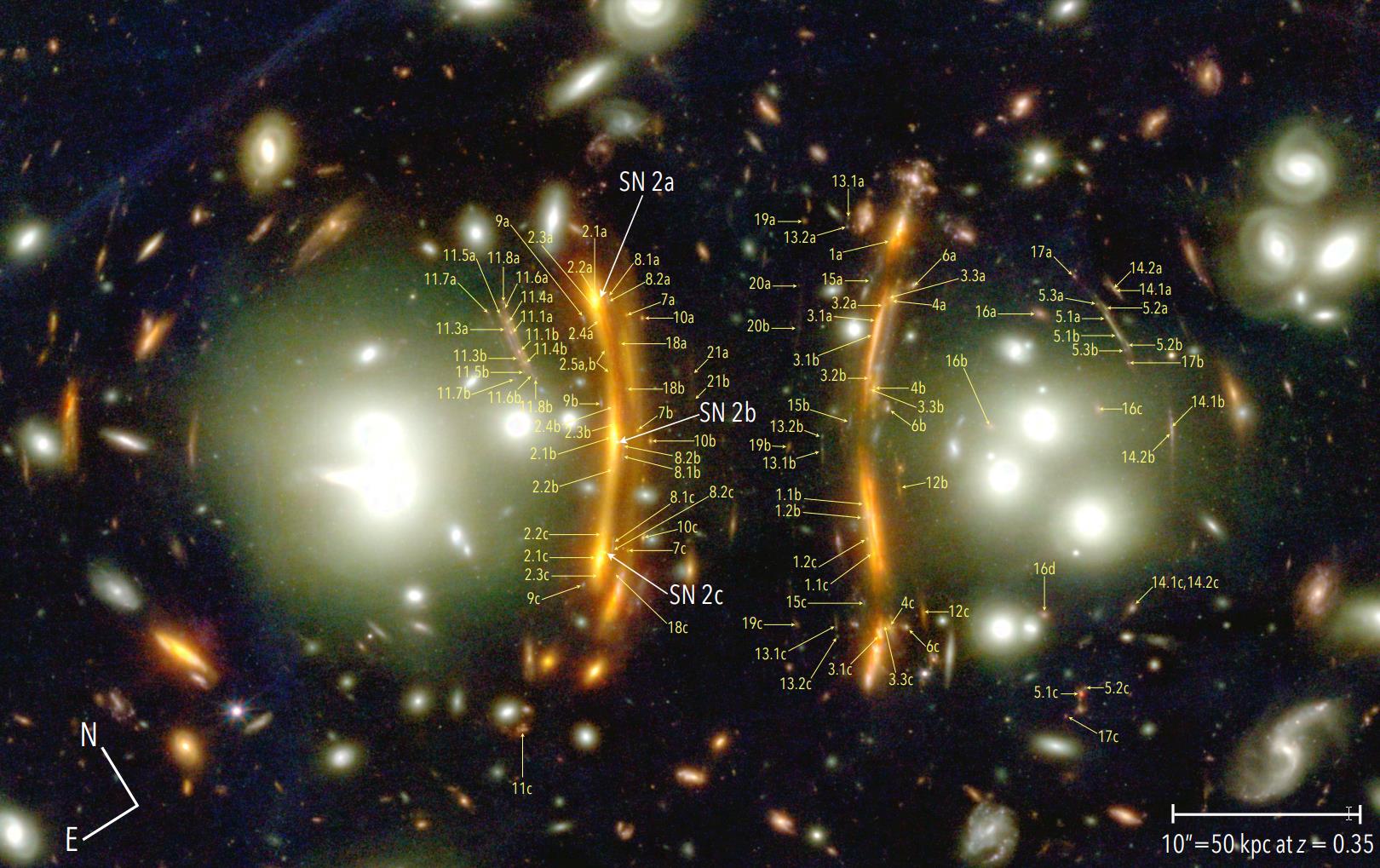
But this arc was not the only interesting feature to be captured by JWST. It turns out that over the entire field that was imaged by the observatory, a remarkable 21 objects were found exhibiting what’s called “image multiplicity,” meaning that there are multiple images available of at least 21 background, gravitationally lensed objects in this field of view. Some of them were located very far from Arc 2, but a significant number of them were nearly coincident in space: occurring in the same region, at least visually, as where Arc 2 and the triply-lensed supernova was located.
Even more remarkably, JWST’s primary instrument for performing spectroscopy, NIRSpec, was used to take the spectrum of many of those nearby, lensed galaxies. Were these just galaxies at very different distances that happened to be along the same precise line-of-sight as Arc 2, or are they actually indicating a group or cluster of galaxies? With NIRSpec, we can find out. If the galaxies are simply along the same line-of-sight but aren’t clustered together in space, they’ll exhibit key atomic and ionized features — emission and absorption lines — with very different wavelengths. But if they all have the same wavelength but different line intensities, that would indicate a galaxy overdensity: a group or even a cluster of background galaxies, all lensed and magnified by the foreground cluster.
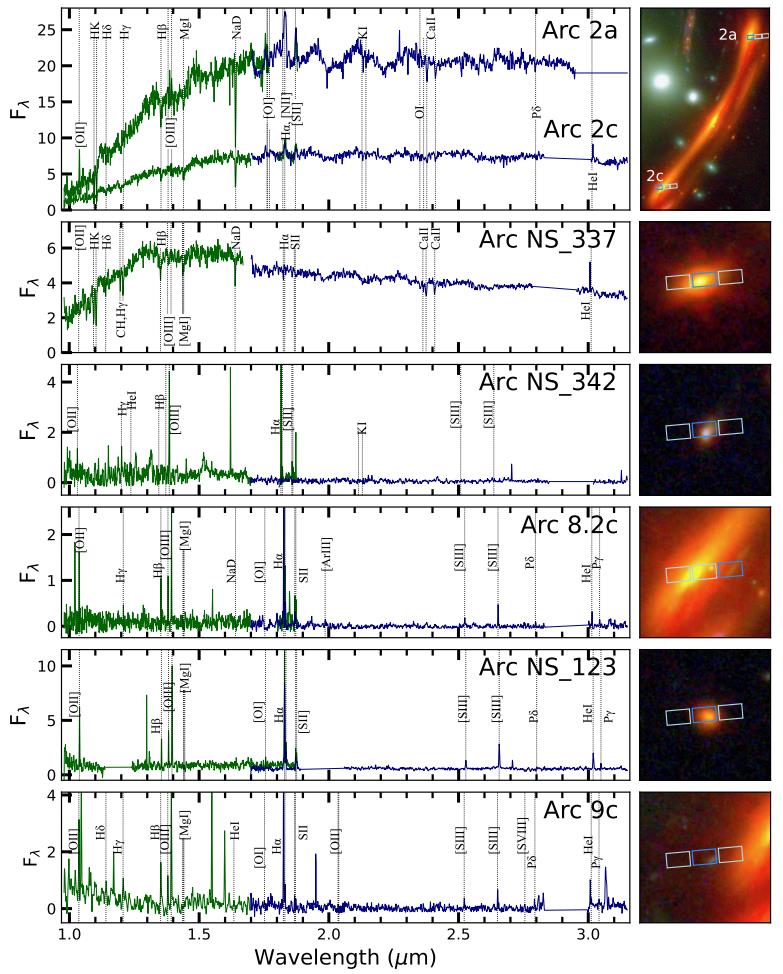
As you can see from the NIRSpec data, above, the elemental signatures are unambiguous: there are a significant number of galaxies whose light is all “shifted” by the expansion of the Universe by the same amount. There are at least six member galaxies in this group, and four of them are incredibly close together: within only a few hundred thousand light-years, or about the diameter of the Milky Way, of one another. However, it’s the host galaxy Arc 2, where the supernova is only ~5000-7000 light-years from Arc 2 itself, that’s by far the most massive galaxy found in this overdense clump.
Elsewhere in the field of cluster G165 are two other galaxy overdensities, shown below. One of them is located slightly closer than the Arc 2 clump, at a distance of about 15 billion light-years, while one is even more distant: somewhere between 18.1 and 18.3 billion light-years away. (It is unknown whether this latter set represents two very nearby but unrelated clumps, or whether they’re all part of one even-larger cluster of galaxies.)
In either case, we’ve learned that G165 is remarkable in another sense: that not only does it house a triply-lensed supernova and the second-farthest type Ia supernova ever discovered, but that the region of space behind it contains at least three separate groups/clusters of galaxies that the main cluster itself is gravitationally lensing.
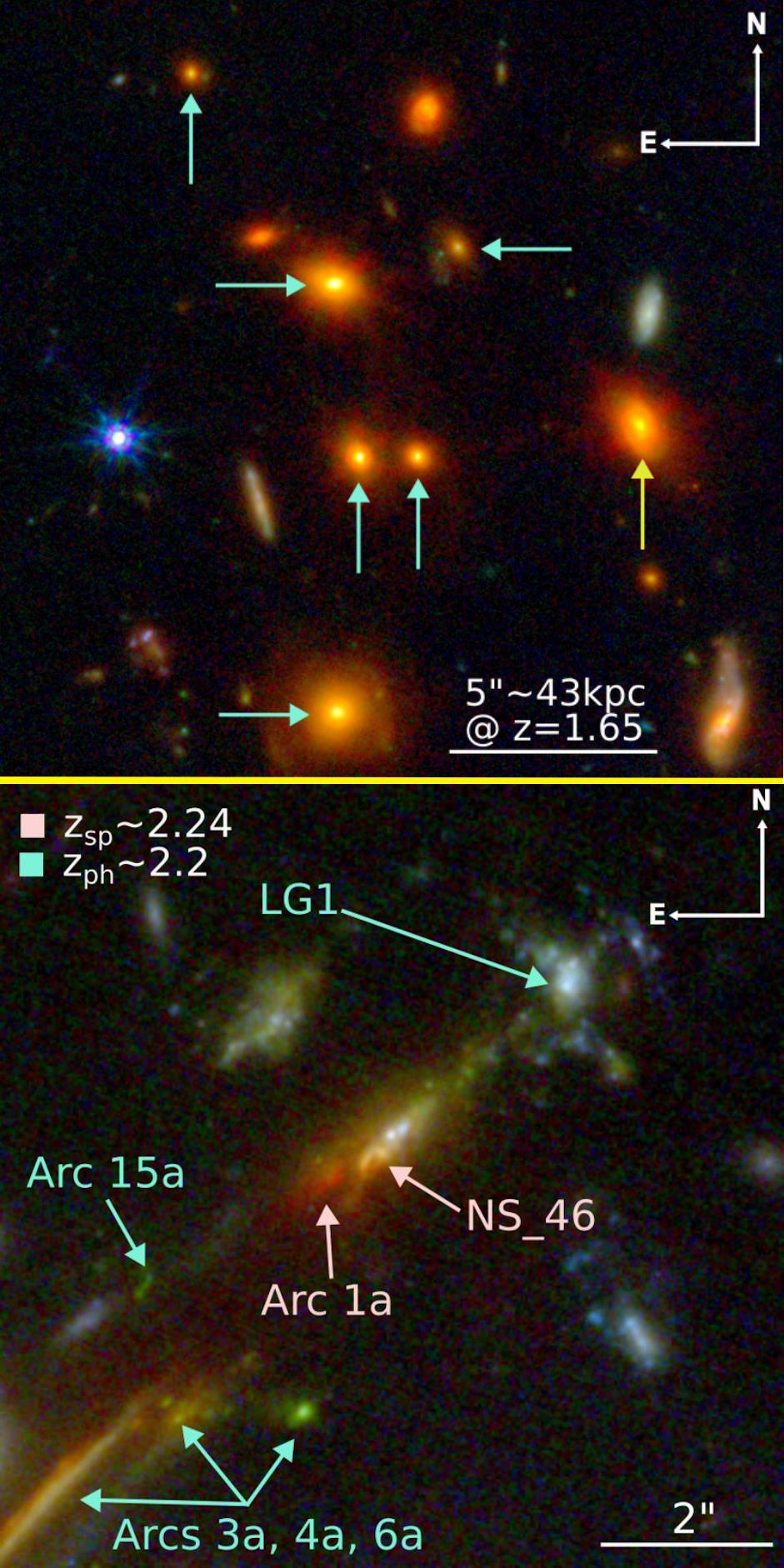
There are two more pieces of important science that come out of this remarkable study. One of them is that, based on this exquisite gravitational lensing data, we can now reconstruct the lensing profile of the foreground galaxy cluster, enabling us to both:
- model the mass distribution of the foreground cluster,
- and also to infer where the regions of maximum magnification are occurring.
In the search for ultra-distant, faint objects, it’s vital to understand exactly how much magnification is occurring and where that magnification is taking place, otherwise it’s possible for us to bias ourselves toward a wrong answer.
But even more importantly, the better we can model the mass distribution and the better we can understand the lensing magnification of the background objects, the more successful we’re going to be at using the time-delays of any multiply-imaged transients, such as type Ia supernovae, to attempt to infer the expansion of the Universe. There’s a reason that the triply-lensed supernova was given the name “Supernova H0pe” or “SN H0pe” for short: it gives us hope that we’ll be able to measure the Hubble expansion rate, H0, to better accuracy than ever before by using this technique and maybe even this particular lensed system.

And the last piece of important science to come out of this work is not to be understated: all of the background, lensed galaxies that had their spectra taken can have their star formation rates determined. In each of these galaxies, there’s a transition of hydrogen that’s very easy to measure: the Balmer-alpha line (sometimes just called Hα), which represents the n=3 to n=2 transition of electrons within the hydrogen atom. In the laboratory, this makes a nice red emission line of wavelength 656.3 nanometers, and in these distant galaxies, you simply multiply that number by the “stretch factor” of (1 + redshift) to find that line again.
As long as you correct for:
- stellar absorption (absorption by stars),
- dust extinction (light blocked by intervening dust),
- and slit losses (an instrumental effect),
you can measure the star formation rate and infer the expected frequency of supernovae you’ll see with continued monitoring. What they found is that on the opposite side of the cluster G165 — i.e., on the “Arc 1” side instead of the Arc 2 side — they anticipate an expected supernova rate of about 1 per year. Even though type II supernovae are more common than type Ia supernovae, it’s possible that continued observations of this galaxy cluster will yield several additional type Ia supernovae over the lifetime of JWST.

It’s important to note that this is not the first triply-lensed supernova that JWST has seen; that honor belongs to the galaxy cluster RX J2129, whose data was released back at the end of February. However, only the faded remnant of this transient existed in one of the images, and it’s far less distant than the supernova seen in Arc 2 of galaxy cluster G165. Instead, in this new system, we now have:
- a triply-lensed supernova,
- (at least) three independent background, lensed galaxy groups,
- and a very solid, data-driven lensing magnification map of the entire galaxy cluster.
With future observations and as more time passes — both from new data and from data that’s still being analyzed and prepared by this collaboration — we may obtain the most precise and accurate measurement for the expansion rate of the Universe using the cosmic distance ladder method of all-time.
This triply-imaged supernova was not named “Supernova H0pe” in vain, as it really does give us hope that the answer to today’s greatest cosmic puzzle may indeed be written on the face of the Universe. With JWST going strong, we may have already found the galaxy cluster, and the gravitationally lensed system, that will resolve what’s been puzzling astronomers for the entirety of the 21st century.
